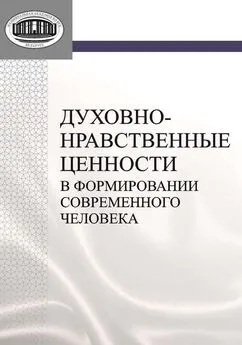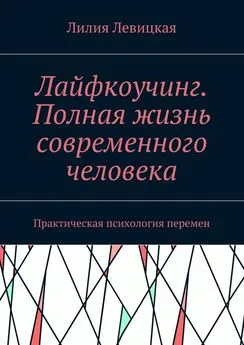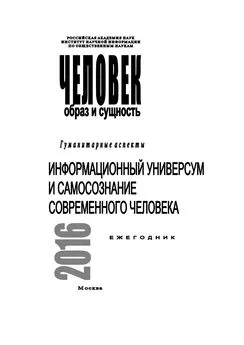Сандра Кан - Укус эволюции. Откуда у современного человека неправильный прикус, кривые зубы и другие деформации челюсти
- Название:Укус эволюции. Откуда у современного человека неправильный прикус, кривые зубы и другие деформации челюсти
- Автор:
- Жанр:
- Издательство:Эксмо
- Год:2021
- Город:М.
- ISBN:978-5-04-116642-7
- Рейтинг:
- Избранное:Добавить в избранное
-
Отзывы:
-
Ваша оценка:
Сандра Кан - Укус эволюции. Откуда у современного человека неправильный прикус, кривые зубы и другие деформации челюсти краткое содержание
Укус эволюции. Откуда у современного человека неправильный прикус, кривые зубы и другие деформации челюсти - читать онлайн бесплатно ознакомительный отрывок
Интервал:
Закладка:
57. R. M. Sapolsky. 2004. Why zebras don’t get ulcers. 3rd edition. Henry Holt and Company.
58. M. Butt, G. Dwivedi, O. Khair, and G. Y. Lip. 2010. Obstructive sleep apnea and cardiovascular disease. International Journal of Cardiology 139: 7–16; and P. Gopalakrishnan and T. Tak. 2011. Obstructive sleep apnea and cardiovascular disease. Cardiology in Review 19: 279–290.
59. C. Xin, W. Zhang, L. Wang, D. Yang, and J. Wang. 2015. Changes of visual field and optic nerve fiber layer in patients with OSAS. Sleep Breath 19: 129–134.
60. A. N. Vgontzas, D. A. Papanicolaou, E. O. Bixler, K. Hopper, A. Lotsikas, H.-M. Lin, A. Kales, and G. P. Chrousos. 2000. Sleep apnea and daytime sleepiness and fatigue: Relation to visceral obesity, insulin resistance, and hypercytokinemia. The Journal of Clinical Endocrinology and Metabolism 85: 1151–1158.
61. M. A. Daulatzai. 2013. Death by a thousand cuts in Alzheimer’s disease: Hypoxia – the prodrome. Neurotox Res 24: 216–243; and K. B. Kim. 2015. How has our interest in the airway changed over 100 years? American Journal of Orthodontics and Dentofacial Orthopedics 148: 740–747.
62. Mark Wheeler. 2015. UCLA researchers provide first evidence of how obstructive sleep apnea damages the brain. UCLA Newsroom. September 1. Просмотрено 22 ноября 2015 по ссылке: http://bit.ly/1RkngBS.
63. D. W. Beebe and D. Gozal D. 2002. Obstructive sleep apnea and the prefrontal cortex: Towards a comprehensive model linking nocturnal upper airway obstruction to daytime cognitive and behavioral deficits. Journal of Sleep Research 11: 1–16; B. Naëgelé, V. Thouvard, J. L. Pépin, P. Lévy, C. Bonnet, J. E. Perret, J. Pellat, and C. Feuerstein. 1995. Deficits of cognitive executive functions in patients with sleep apnea syndrome. Sleep: Journal of Sleep Research & Sleep Medicine; S. K. Rhodes, K. C. Shimoda, L. R. Waid, P. M. O’Neil, M. J. Oexmann, N. A. Collop, and S. M. Willi. 1995. Neurocognitive deficits in morbidly obese children with obstructive sleep apnea. The Journal of Pediatrics 127: 741–744; and J. Molano, D. Kleindorfer, L. McClure, F. Unverzagt, V. Wadley, and V. Howard. 2015. The association of sleep apnea and stroke with cognitive performance: The reasons for geographic and racial differences in stroke (REGARDS) study. Neurology 84: Supplement S53.005.
64. M. A. Bédard, J. Montplaisir, F. Richer, I. Rouleau, and J. Malo. 1991. Obstructive sleep apnea syndrome: Pathogenesis of neuropsychological deficits. Journal of Clinical and Experimental Neuropsychology 13: 950–964; and S. K. Rhodes, K. C. Shimoda, L. R. Waid, P. M. O’Neil, M. J. Oexmann, N. A. Collop, and S. M. Willi. 1995. Neurocognitive deficits in morbidly obese children with obstructive sleep apnea. The Journal of Pediatrics 127: 741–744.
65. M. Alchanatis, N. Zias, N. Deligiorgis, A. Amflochiou, G. Dionellis, and D. Orphanidou. 2005. Sleep apnea-related cognitive deficits and intelligence: An implication of cognitive reserve theory. Journal of Sleep Research 14: 69–75.
66. D. Gozal, F. Hakim, and L. Kheirandish-Gozal. 2013. Chemoreceptors, baroreceptors, and autonomic deregulation in children with obstructive sleep apnea. Respiratory Physiology & Neurobiology 185: 177–185.
67. C. M. Hill, A. M. Hogan, N. Onugha, D. Harrison, S. Cooper, V. J. McGrigor, A. Datta, and F. J. Kirkham. 2006. Increased cerebral blood flow velocity in children with mild sleep-disordered breathing: A possible association with abnormal neuropsychological function. Pediatrics 118.
68. P. Mehra, M. Downie, M. C. Pita, and L. M. Wolford. 2001. Pharyngeal airway space after counterclockwise rotation of the maxillomandibular complex. Am J Dentofacial Orthop 120: 154–159; and N. Powell. 2005. Upper airway surgery does have a major role in the treatment of obstructive sleep apnea: «The tail end of the dog» Journal of Clinical Sleep Medicine 1: 236–240.
69. D. Wardly, L. M. Wolford, and V. Veerappan. 2016. Idiopathic intracranial hypertension eliminated by counterclockwise maxillomandibular advancement: A case report. Cranio: The Journal of Craniomandibular and Sleep Practice DOI: 10.1080/ 08869634.2016.1201634.
70. N. Powell. 2005. Upper airway surgery does have a major role in the treatment of obstructive sleep apnea: «The tail end of the dog» Journal of Clinical Sleep Medicine 1: 236–240; M. Tselnik and M. Anthony Pogrel. 2000. Assessment of the pharyngeal airway space after mandibular setback surgery. Journal of Oral and Maxillofacial Surgery 58: 282–285; M. Kawakami, K. Yamamoto, M. Fujimoto, K. Ohgi, M. Inoue, and T. Kirita. 2005. Changes in tongue and hyoid positions, and posterior airway space following mandibular setback surgery. Journal of Cranio-Maxillofacial Surgery 33: 107–110; J. C. Quintero and J. McCain J. 2012. Total airway volume increase through OMfS measured with cone beam CT: A case report. September. orthotown.com.
71. K. Degerliyurt, K. Ueki, Y. Hashiba, K. Marukawa, K. Nakagawa, and E. Yamamoto. 2008. A comparative CT evaluation of pharyngeal airway changes in class III patients receiving bimaxillary surgery or mandibular setback surgery. Oral Surgery, Oral Medicine, Oral Pathology, Oral Radiology and Endodontology 105: 495–502.
72. R. Wijey. 2014. Orthognathic surgery: The definitive answer? International Journal of Orthodontics 25(4): 67–68.
73. C. H. Won, K. K. Li, and C. Guilleminault C. 2008. Surgical treatment of obstructive sleep apnea: Upper airway and maxillomandibular surgery. Proceedings of the American Thoracic Society 5: 193–199.
74. L. Ferini-Strambi, C. Baietto, M. Di Gioia, P. Castaldi, C. Castronovo, M. Zucconi, and S. Cappa. 2003. Cognitive dysfunction in patients with obstructive sleep apnea (OSA): Partial reversibility after continuous positive airway pressure (CPAP). Brain Research Bulletin 61: 87–92.
75. R. Davies and J. R. Stradling. 1990. The relationship between neck circumference, radiographic pharyngeal anatomy, and the obstructive sleep apnoea syndrome. Eur Respir J 3: 509–514; R. J. O. Davies, N. J. Ali, and J. R. Stradling. 1992. Neck circumference and other clinical features in the diagnosis of the obstructive sleep apnoea syndrome. Thorax 47: 101–105; and R. J. Schwab, M. Pasirstein, R. Pierson, A. Mackley, R. Hachadoorian, R. Arens, G. Maislin, and A. I. Pack. 2003. Identification of upper airway anatomic risk factors for obstructive sleep apnea with volumetric magnetic resonance imaging. American Journal of Respiratory and Critical Care Medicine 168: 222–530.
Глава 7
1. G. Catlin. 1861 Shut your mouth and save your life (первоначальное название: The breath of life). Wiley.
2. K. G. Peres, A. M. Cascaes, M. A. Peres, F. F. Demarco, I. S. Santos, A. Matijasevich, and A. J. Barros. 2015. Exclusive breastfeeding and risk of dental malocclusion. Pediatrics 136:e60–e67; and S. A. S. Moimaz, A. J. Í. Garbin, A. M. C. Lima, L. F. Lolli, O. Saliba, and C. A. S. Garbin. 2014. Longitudinal study of habits leading to malocclusion development in childhood. BMC Oral Health 14: 96.
3. M. S. Fewtrell, J. B. Morgan, C. Duggan, G. Gunnlaugsson, P. L. Hibberd, A. Lucas, and R. E. Kleinman. 2007. Optimal duration of exclusive breastfeeding: What is the evidence to support current recommendations? The American Journal of Clinical Nutrition 85: 635S–638S.
4. A. L. García, S. Raza, A. Parrett, and C. M. Wright. 2013. Nutritional content of infant commercial weaning foods in the UK. Archives of Disease in Childhood 98: 793–797.
5. Исследования на крысах показали, что у тех, кто получал жидкое питание после отлучения от груди, происходили изменения в лицевых костях и мускулатуре челюсти; см. Z. Liu, K. Ikeda, S. Harada, Y. Kasahara, and G. Ito. 1998. Functional properties of jaw and tongue muscles in rats fed a liquid diet after being weaned. Journal of Dental Research 77: 366–376.
6. Сайт организации в интернете: www.babyledweaning.com/.
7. Электронное письмо, 20 октября 2015.
8. Личная беседа с Сандрой, Лондон, октябрь 2015.
9. J. Diamond. 2012. The world until yesterday. Viking.
10. M. Bergamini, F. Pierleoni, A. Gizdulich, and C. Bergamini. 2008. Dental occlusion and body posture: A surface EMG study. Cranio 26: 25–32; S. Kiwamu, R. Mehta Noshir, F. Abdallah Emad, Albert G. Forgione, H. Hiroshi, K. Takao, and Y. Atsuro. 2014. Examination of the relationship between mandibular position and body posture. Cranio 25(4): 237–249; and D. Manfredini, T. Castroforio, G. Perinetti, and L. Guarda-Nardini. 2012. Dental occlusion, body posture and temporomandibular disorders: Where we are now and where we are heading for. Journal of Oral Rehabilitation 39: 463–471.
11. M. Rocabado, B. E. Johnston Jr., and M. G. Blakney. 1982. Physical therapy and dentistry: An overview: A perspective. Journal of Craniomandibular Practice 1: 46–49; and B. Solow and L. Sonnesen. 1998. Head posture and malocclusions. The European Journal of Orthodontics 20: 685–693.
12. E. Antunovic. 2008. Strollers, baby carriers, and infant stress: Horizontal versus upright transport in early infancy. Просмотрено 20 декабря 2015 по ссылке: http://bit.ly /1ZpXyR3.
13. M. C. Frank, K. Simmons, D. Yurovsky, and G. Pusiol. 2013. Developmental and postural changes in children’s visual access to faces. Proceedings of the 35th Annual Meeting of the Cognitive Science Society, Austin, TX: 454–459.
14. S. Zeedyk. 2008. What’s life in a baby buggy like? The impact of buggy orientation on parent-infant interaction and infant stress. London: National Literacy Trust. Просмотрено 21 ноября 2008 по ссылке: www.suttontrust.com/research-paper/whats-life-baby-buggy-like-impact-buggy-orientation-parent-infant-interaction-infant-stress/.
15. J. R. Harkema, S. A. Carey, and J. G. Wagner. 2006. The nose revisited: A brief review of the comparative structure, function, and toxicologic pathology of the nasal epithelium. Toxicologic pathology 34: 252–269.
16. Личная беседа, 11 февраля 2016.
17. R. Dales, L. Liu, and A. J. Wheeler. 2008. Quality of indoor residential air and health. Canadian Medical Association Journal 179: 147–152.
18. J. M. Samet, M. C. Marbury, and J. D. Spengler. 1988. Health effects and sources of indoor air pollution. Part II. American Review of Respiratory Disease 137: 221–242.
19. M. Garrett, M. Hooper, B. Hooper, P. Rayment, and M. Abramson. 1999. Increased risk of allergy in children due to formaldehyde exposure in homes. Allergy 54: 330–337.
20. J. L. Sublet, J. Seltzer, R. Burkhead, P. B. Williams, H. J. Wedner, and W. Phipatanakul. 2010. Air filters and air cleaners: Rostrum by the American Academy of Allergy, Asthma & Immunology Indoor Allergen Committee. Journal of Allergy and Clinical Immunology 125: 32–38.
21. L. Roberts, W. Smith, L. Jorm, M. Patel, R. M. Douglas, and C, McGilchrist. 2000. Effect of infection control measures on the frequency of upper respiratory infection in child care: A randomized, controlled trial. Pediatrics 105: 738–742.
22. C. Guilleminault and S. Sullivan S. 2014. Towards restoration of continuous nasal breathing as the ultimate treatment goal in pediatric obstructive sleep apnea. Enliven: Pediatr Neonatol Biol 1: 001.
23. P. McKeown. 2011. Close your mouth: Self-help Buteyko manual. Amazon Digital Services; S. Cooper, J. Oborne, S. Newton, V. Harrison, J. T. Coon, S. Lewis, and A. Tattersfield. 2003. Effect of two breathing exercises (Buteyko and pranayama) in asthma: A randomized controlled trial. Thorax 58: 674–679; and R. L. Cowie, D. P. Conley, M. F. Underwood, and P. G. Reader. 2008. A randomized controlled trial of the Buteyko technique as an adjunct to conventional management of asthma. Respiratory Medicine 102: 726–732.
Читать дальшеИнтервал:
Закладка:









